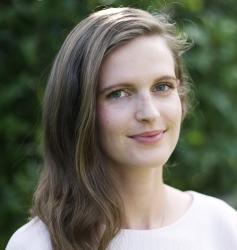Travelling through the Westfjords in late August is like travelling back in time—only very few tourists visit the rugged landscapes, and unspoiled nature seems to be in the foreground in every direction you look. This imagery stands in stark contrast to the tourist-filled vistas of southern Iceland, where the majority of Iceland’s visitors spend their time.
How do residents of the Westfjords feel about Icelandic tourism, and where do they see the industry going? Instead of focusing my attention on hiking through the nature of this remote location, I decided to gain some insight on this topic and asked local inhabitants for their varied perspectives during my recent trip to the region.

Strain on the environment
On my first day in the Westfjords, I come across Hólmavík, the largest town in the Strandir region. Inside the local restaurant, Café Riis, I meet Helena Iris Einarsdottir and her brother, Tómas Atli Einarsson, who both work there as waiters for the summer. Although they were born and raised in Luxembourg, the siblings’ parents are Icelandic and they come to visit their aunt in Hólmavík every summer.
“I am scared for the Icelandic nature,” Helena says. “Tourists walk and drive over the fragile moss and they throw garbage on the sidewalks instead of putting them in trash bins. Everything has changed since we were little. Tourism here in Iceland needs to settle down a bit. It’s so commercialized right now, and it’s putting a strain on the natural environment.”
Tómas seems to agree, but adds that within the Westfjords, tourism is mostly viewed as something positive. “The majority of inhabitants here want tourists to come to the Westfjords” he says. “Tourism has not taken a huge hold of the region and it obviously brings in a lot of money.”

Spreading tourism across Iceland
The idea that tourism in the Westfjords might help local communities gain an income is also shared by Jón Sigurðsson, the owner of a museum dedicated to musical instruments in the town of Þingeyri. “Recently, tourism has started revitalizing business here and creating jobs for the locals,” Jón says.
Jón hopes that the industry will continue to grow. “If more tourists come here to the Westfjords, this could help spread tourism out across Iceland more,” he says. “Instead of all tourists going on the Golden Circle in Southern Iceland, perhaps we could balance out the distribution of tourists in Iceland and do some good for the environment that way.”

Not for everyone
When I meet with Janne Kristensen, the owner of the local café, Simbahöllin, in Þingeyri, however, the optimistic tone of Jón is questioned. She is doubtful that tourism could or should be spread out more across Iceland. “Mass tourism doesn’t fit here in the northern Westfjords,” she says. “Not everyone would like it here. The nature is so rugged and harsh, and the weather doesn’t listen to your request for sunshine for your Instagram photos. It takes an adventurous individual to enjoy their time here.”
Originally from Denmark, she and her Belgian husband, Wouter van Hoeymissen, opened the café because of a wish to add value to the small town. “We’re here because we believe in the place,” Janne says. “We wanted to be part of creating life here. But we don’t want more tourists. We want to be able to focus on great service. We want to stay true to our values. The pressure of the Western economic system makes that difficult. It’s always about growth.”

Milking tourism
The couple also attributes the recent increase in tourism to the Icelandic mentality of seizing opportunities. “Icelandic people tend to be really good at spotting opportunity and then milking it for all it’s worth,” Wouter says. “The tourism agencies and cruise ships sell you an image of Icelandic nature as unspoiled and authentic and they do a really good job at it. They milk it. But with the growth of tourism in Iceland, is the nature unspoiled and authentic really?”
Janne nods her head in agreement, adding that it is important to know when to stop ‘milking.’ “I wouldn’t like for the northern Westfjords to become overrun with tourists,” she says. “But can we prevent that from happening?” She takes a moment to reflect. “For me, the charm of this place is the fact that we don’t have many people come here. If we sell out the place, what will be left?”
The future of tourism
With perspectives that vary in tones and attitudes, it seems that only time will tell where the future of tourism in the Westfjords is heading. One thing is certain throughout my discussions with inhabitants of the region: the tourism industry in Iceland is far from sustainable, and a dialogue on its current state, as well as potential solutions, is most welcomed.
Distance from Reykjavík: 471 km
Sponsor: Hertz Car Rental, Fisherman Hotel and Hótel Sandafell
Buy subscriptions, t-shirts and more from our shop right here!





























